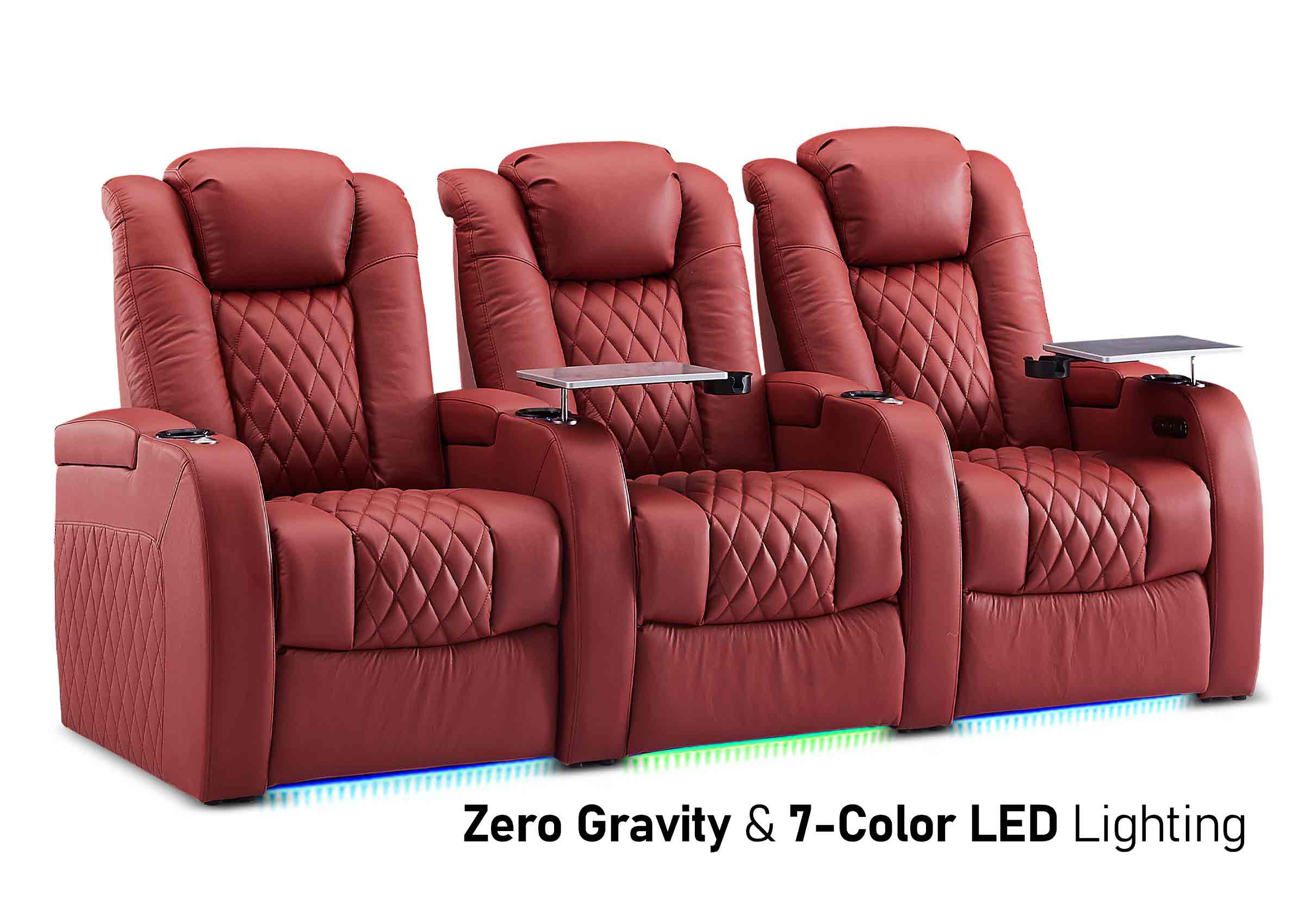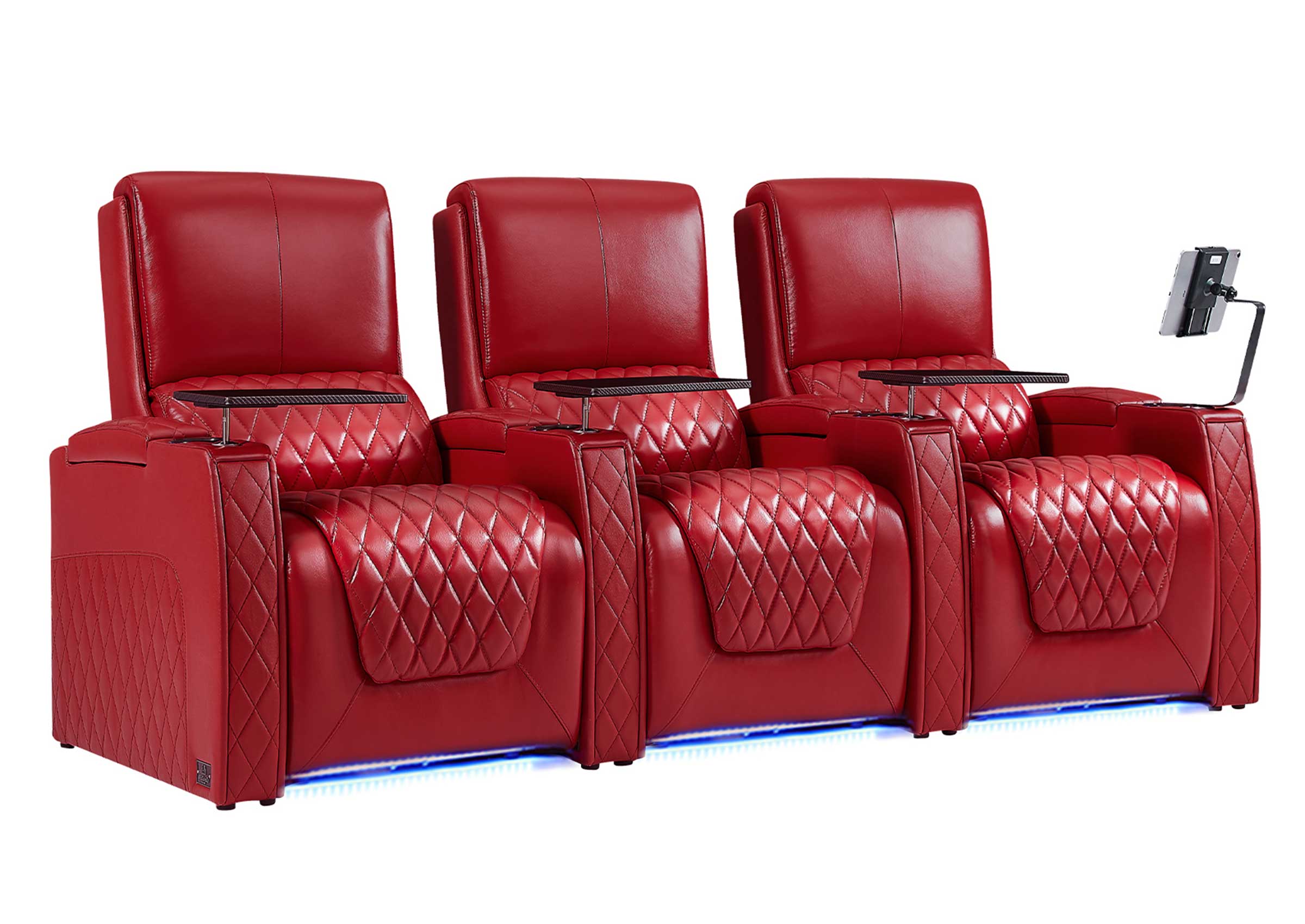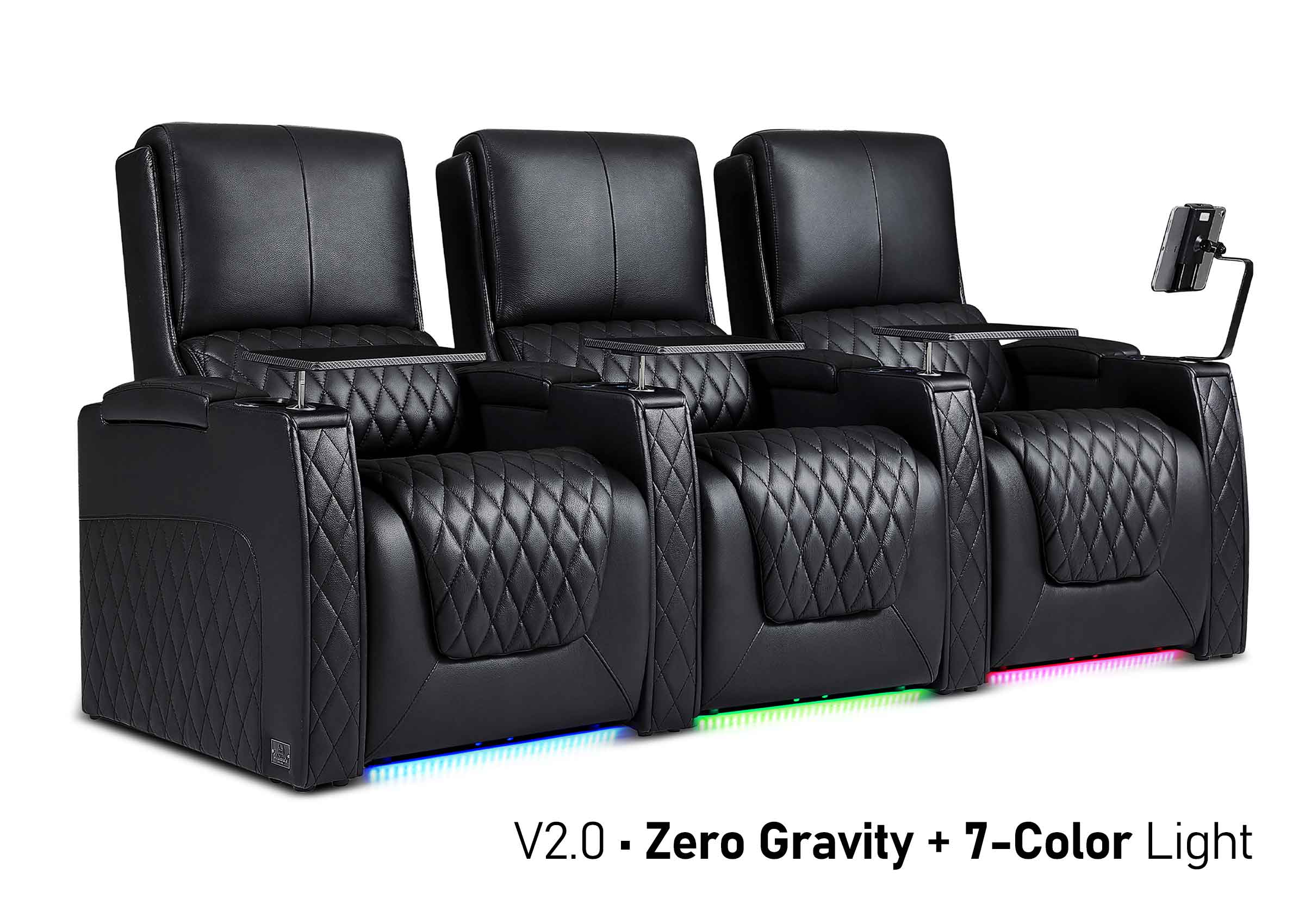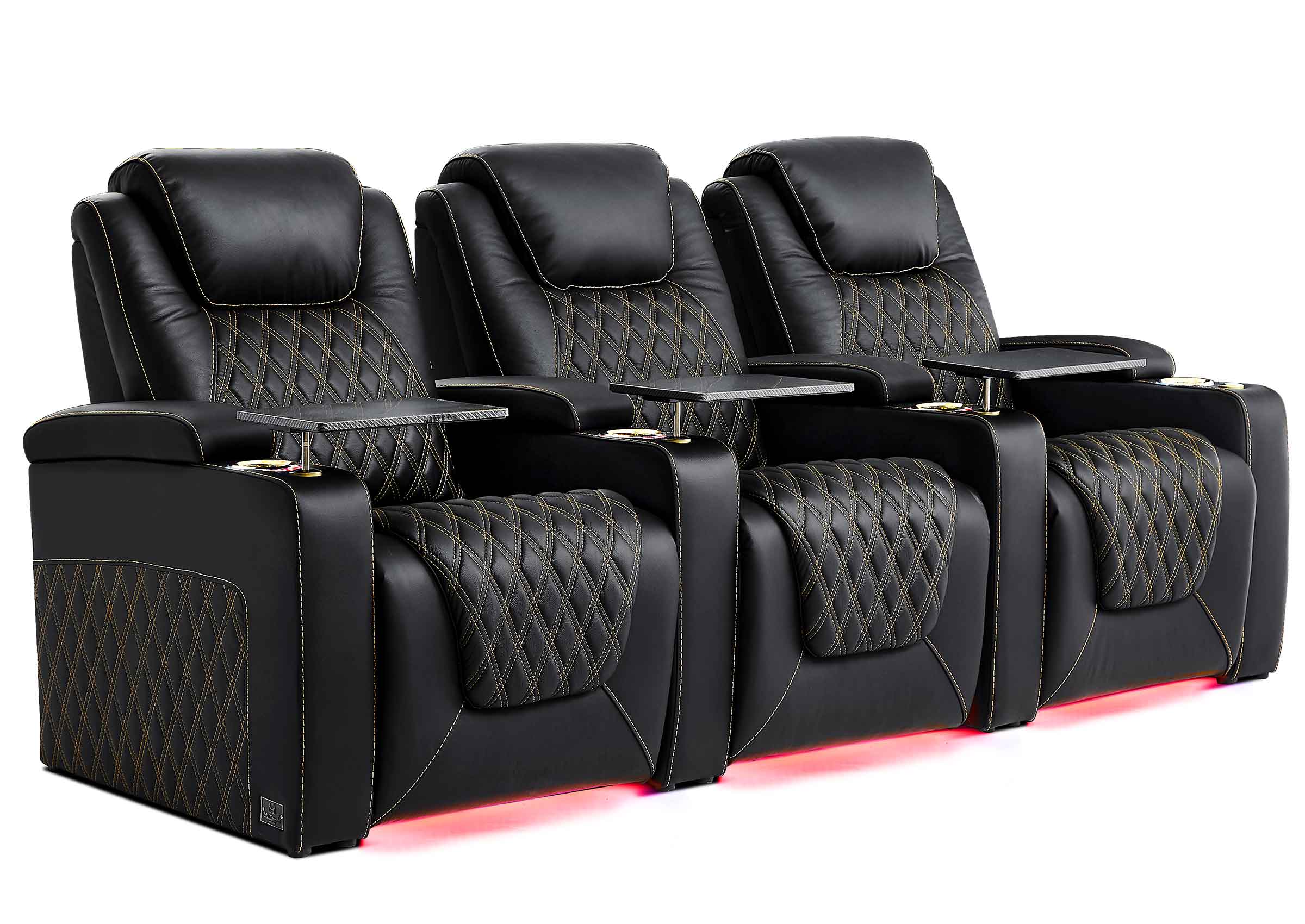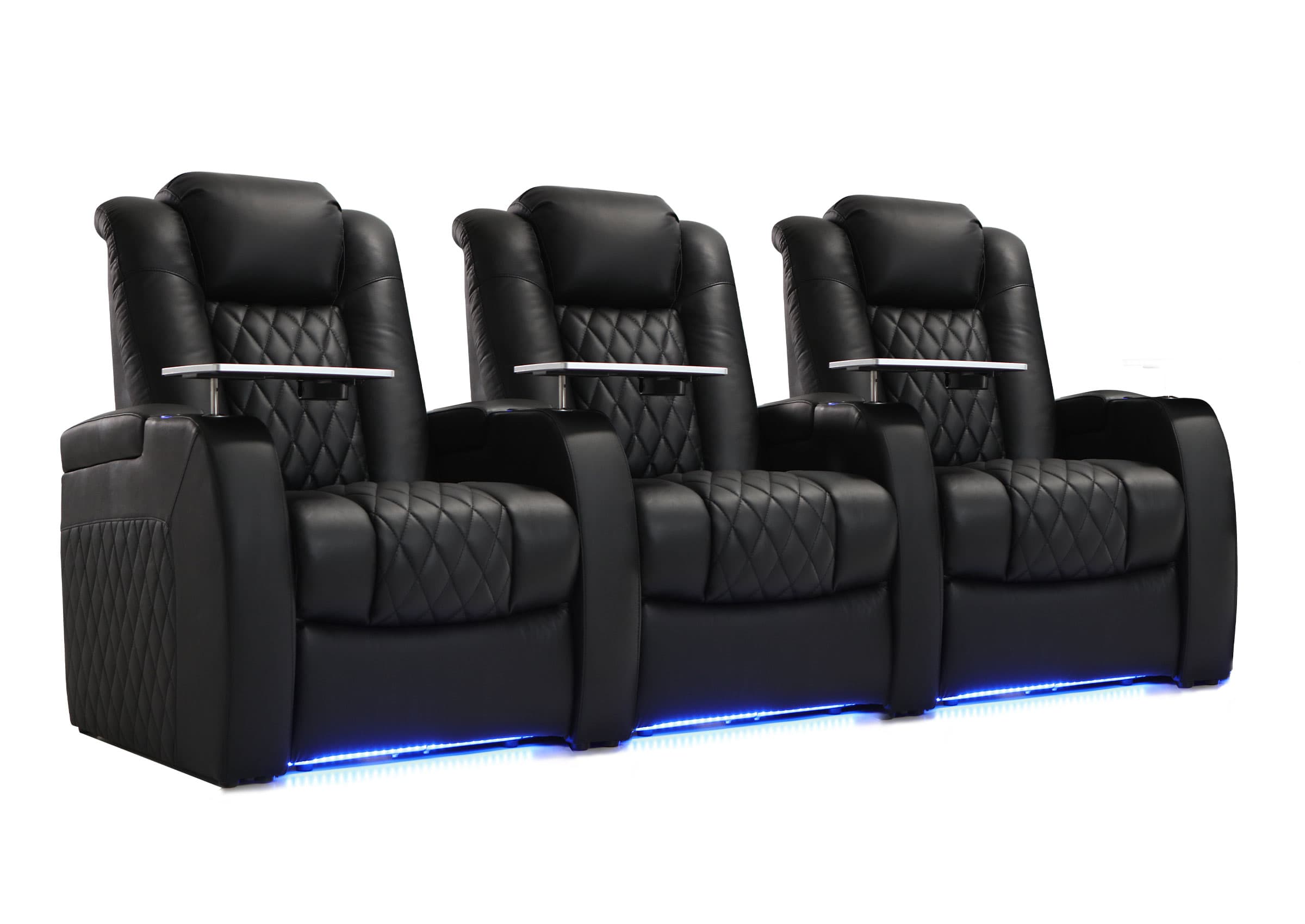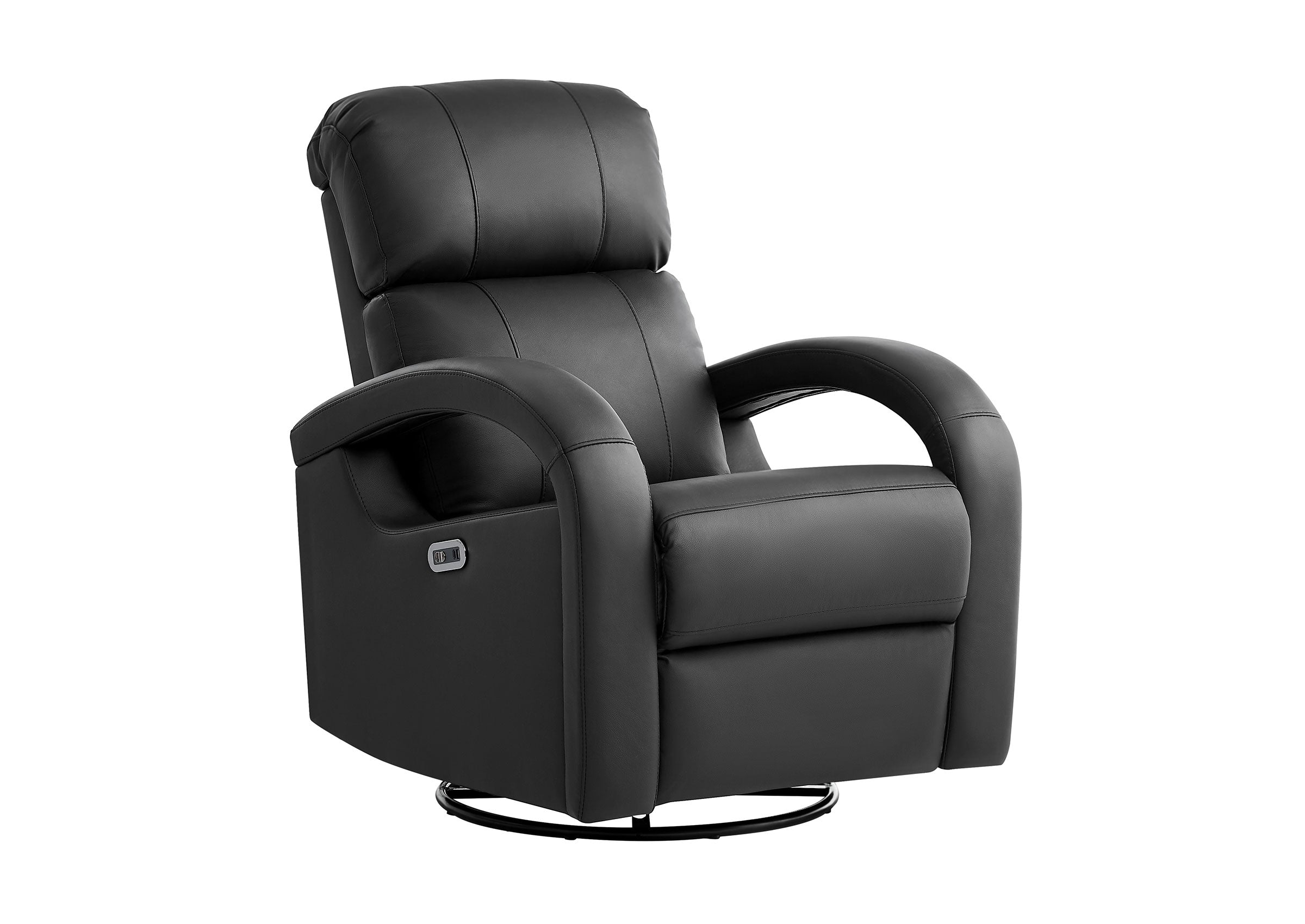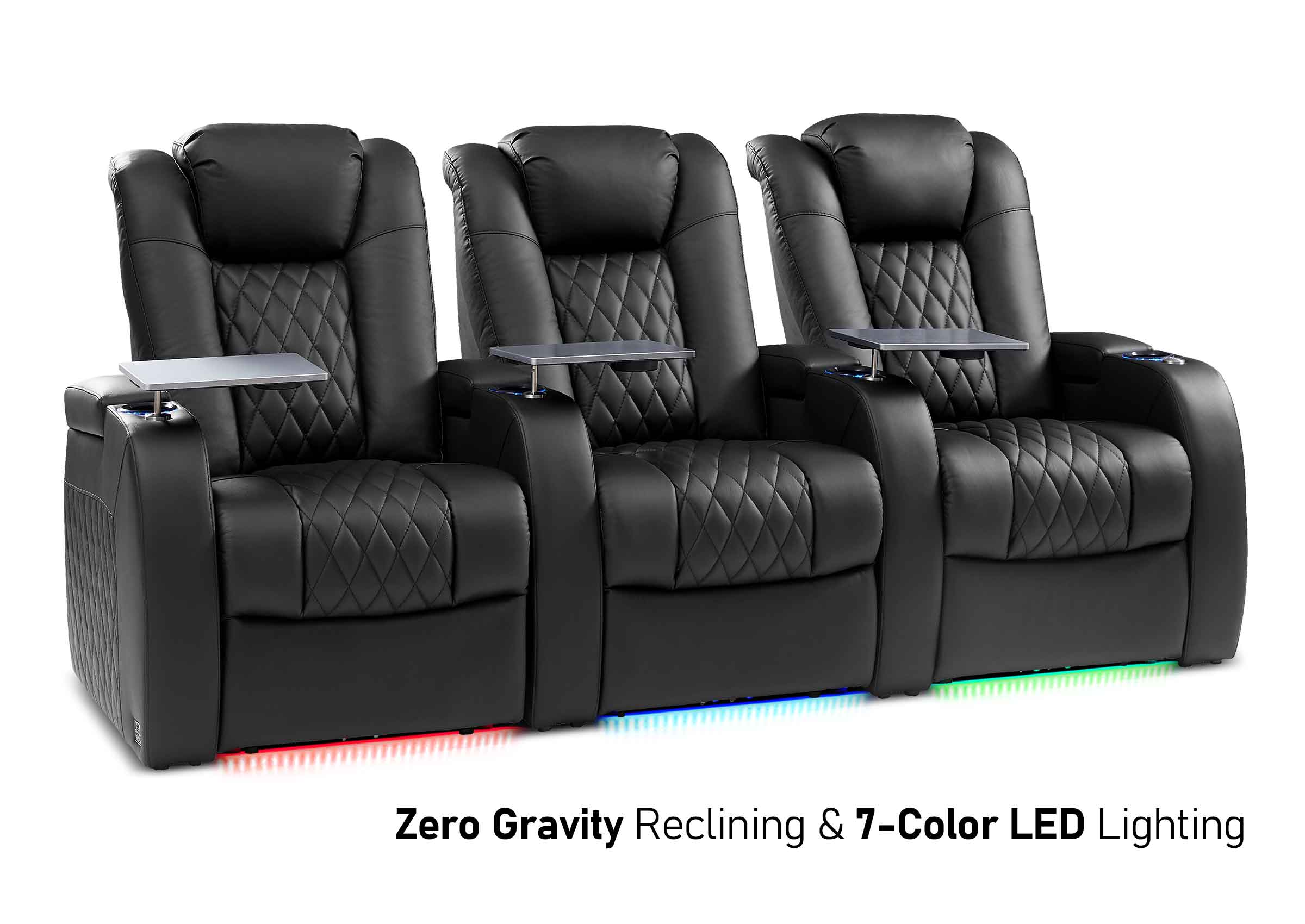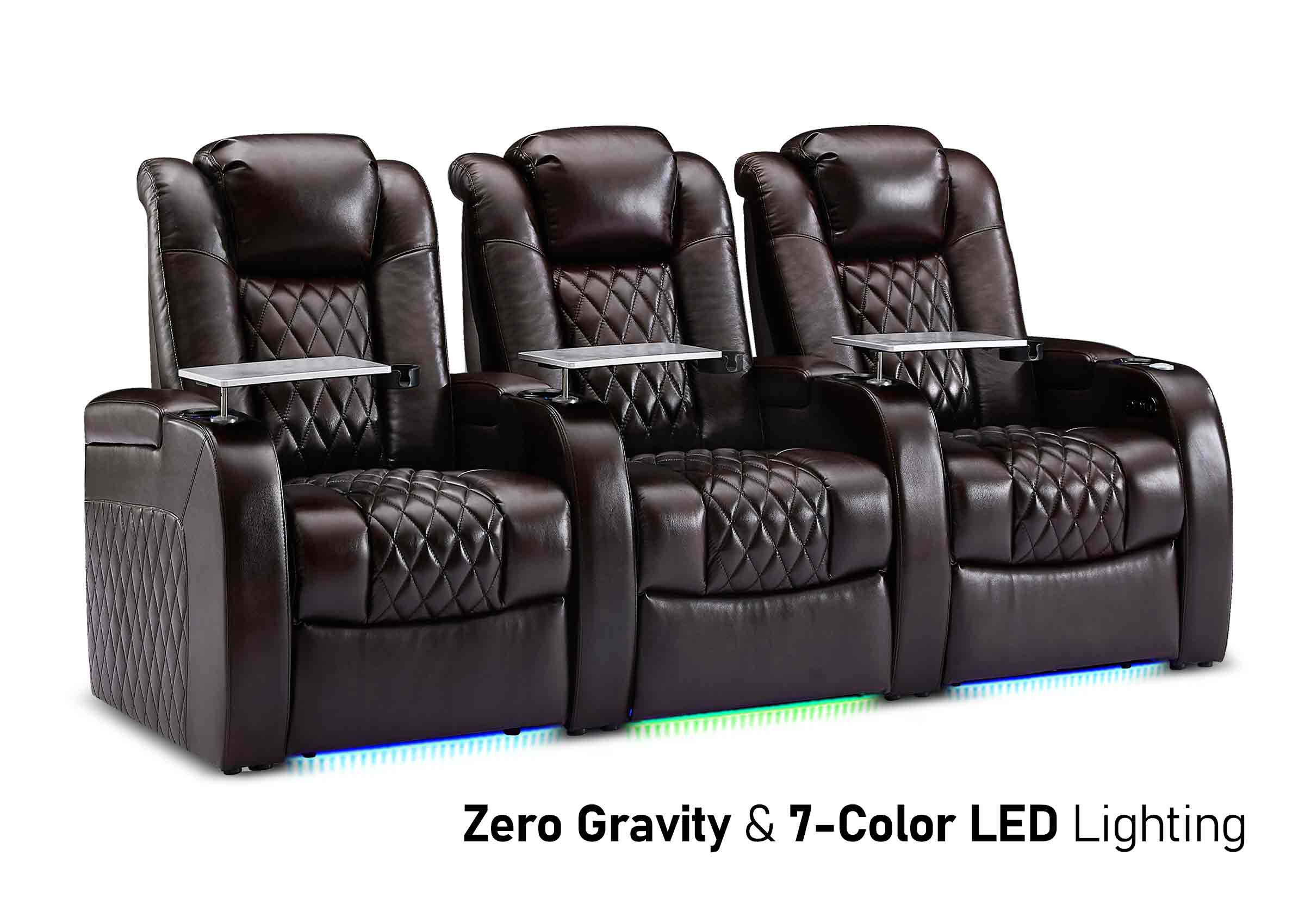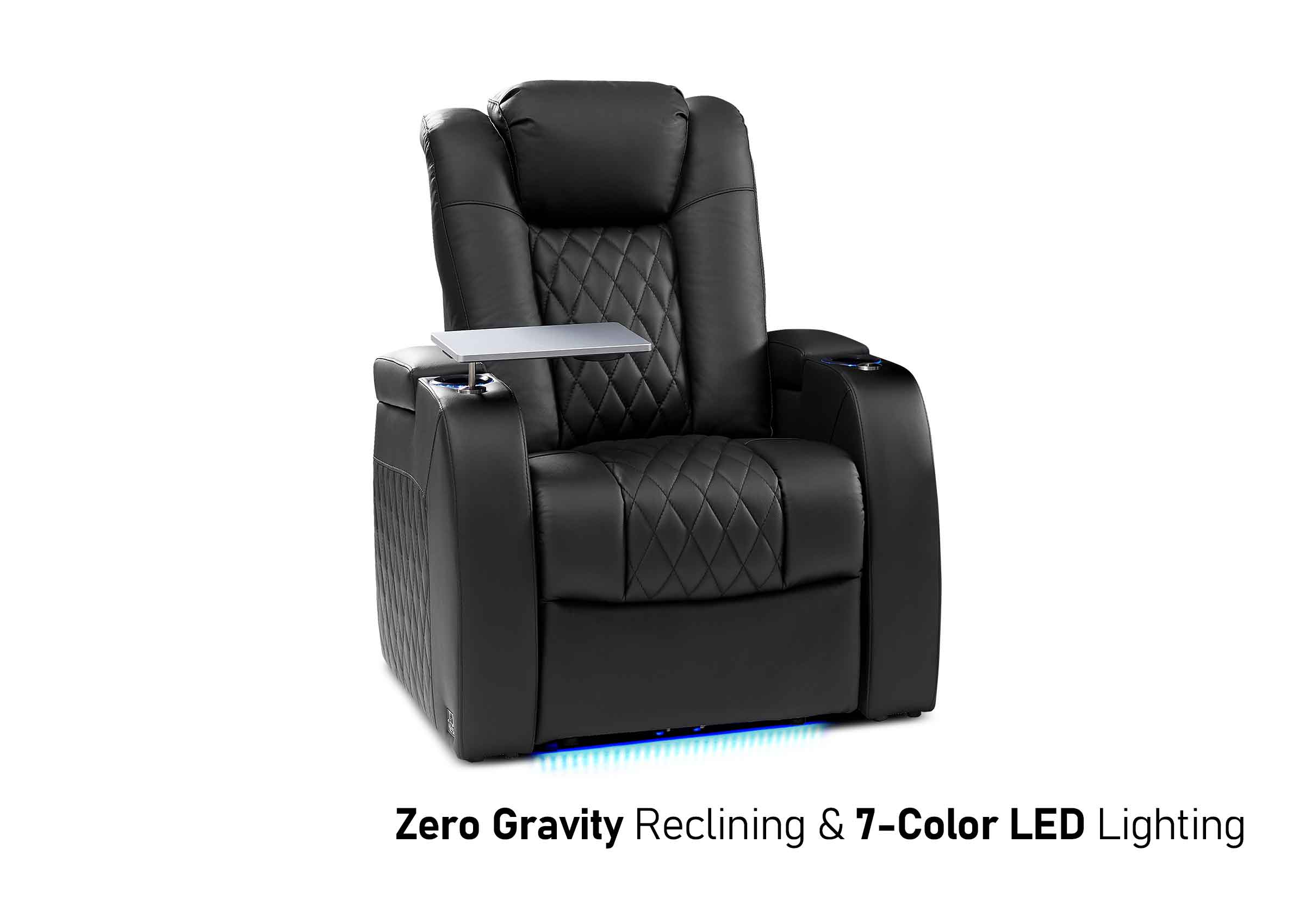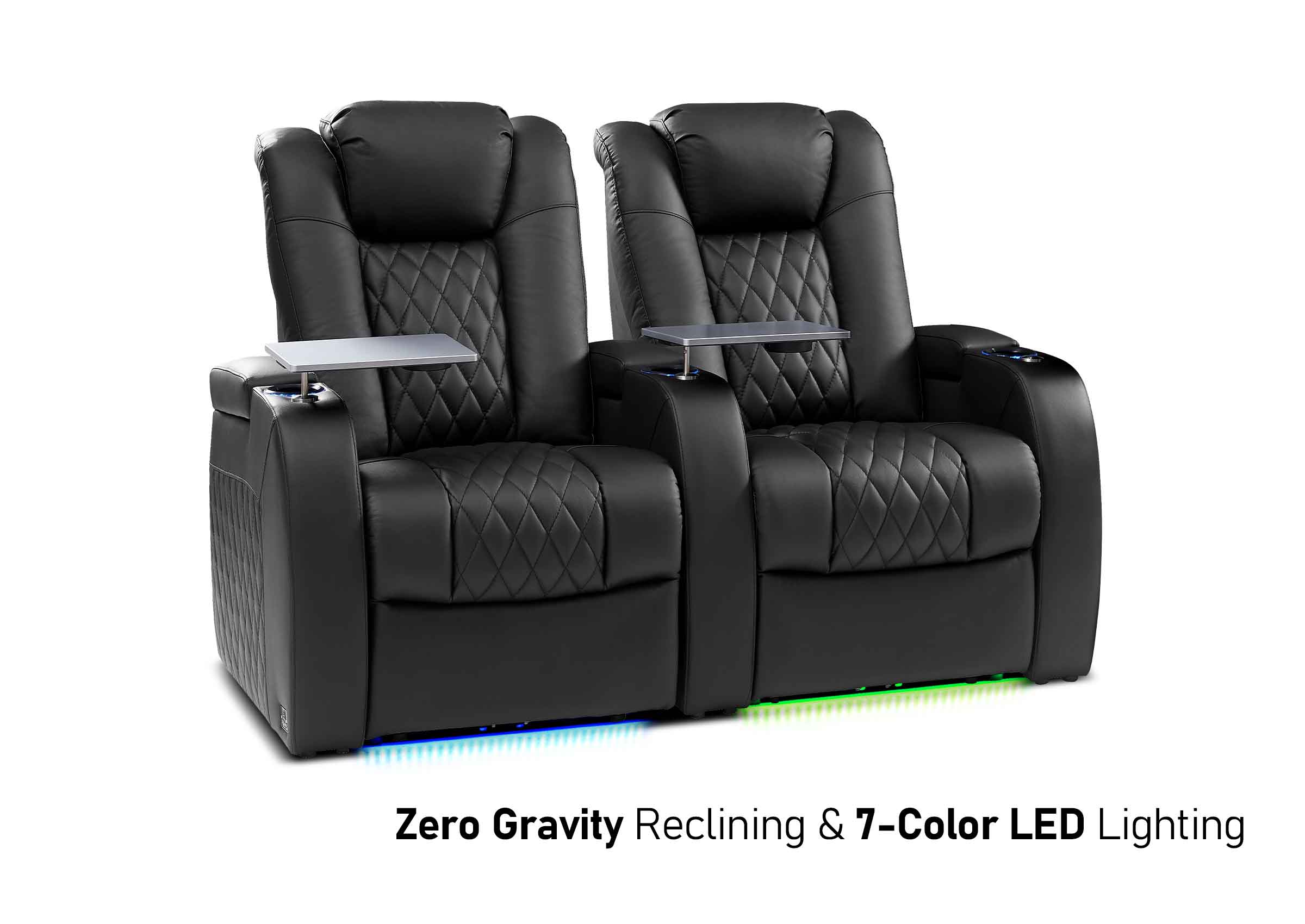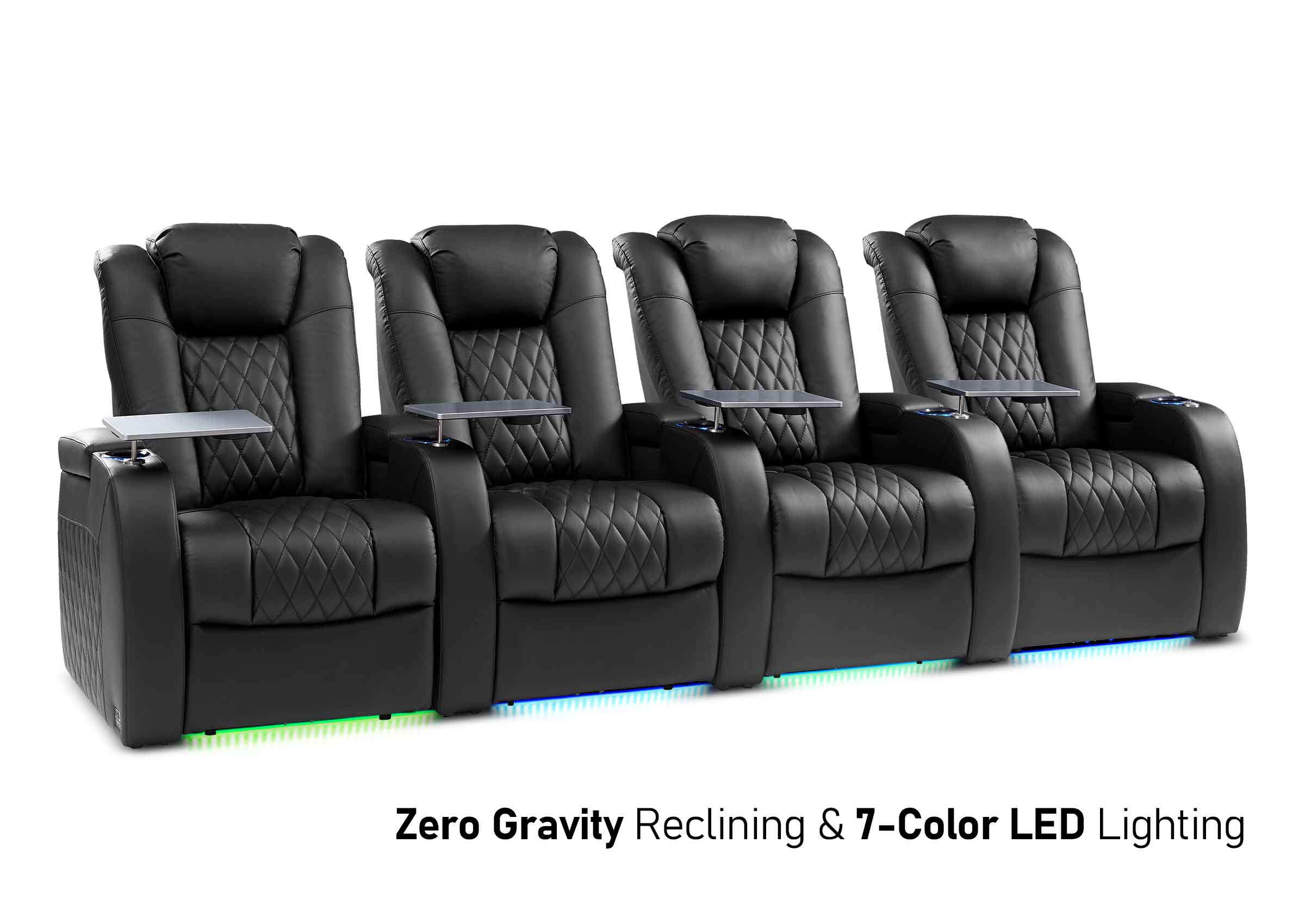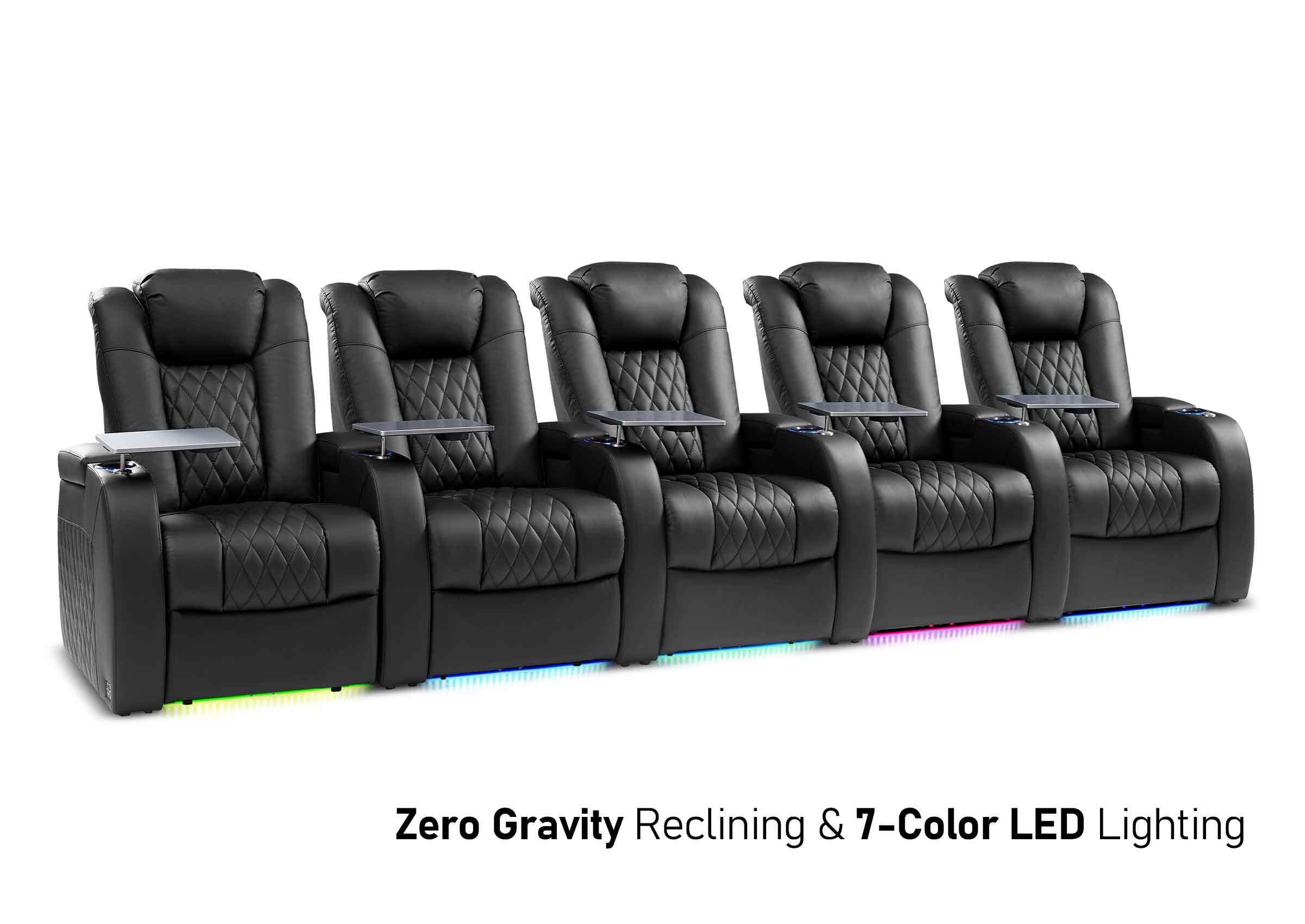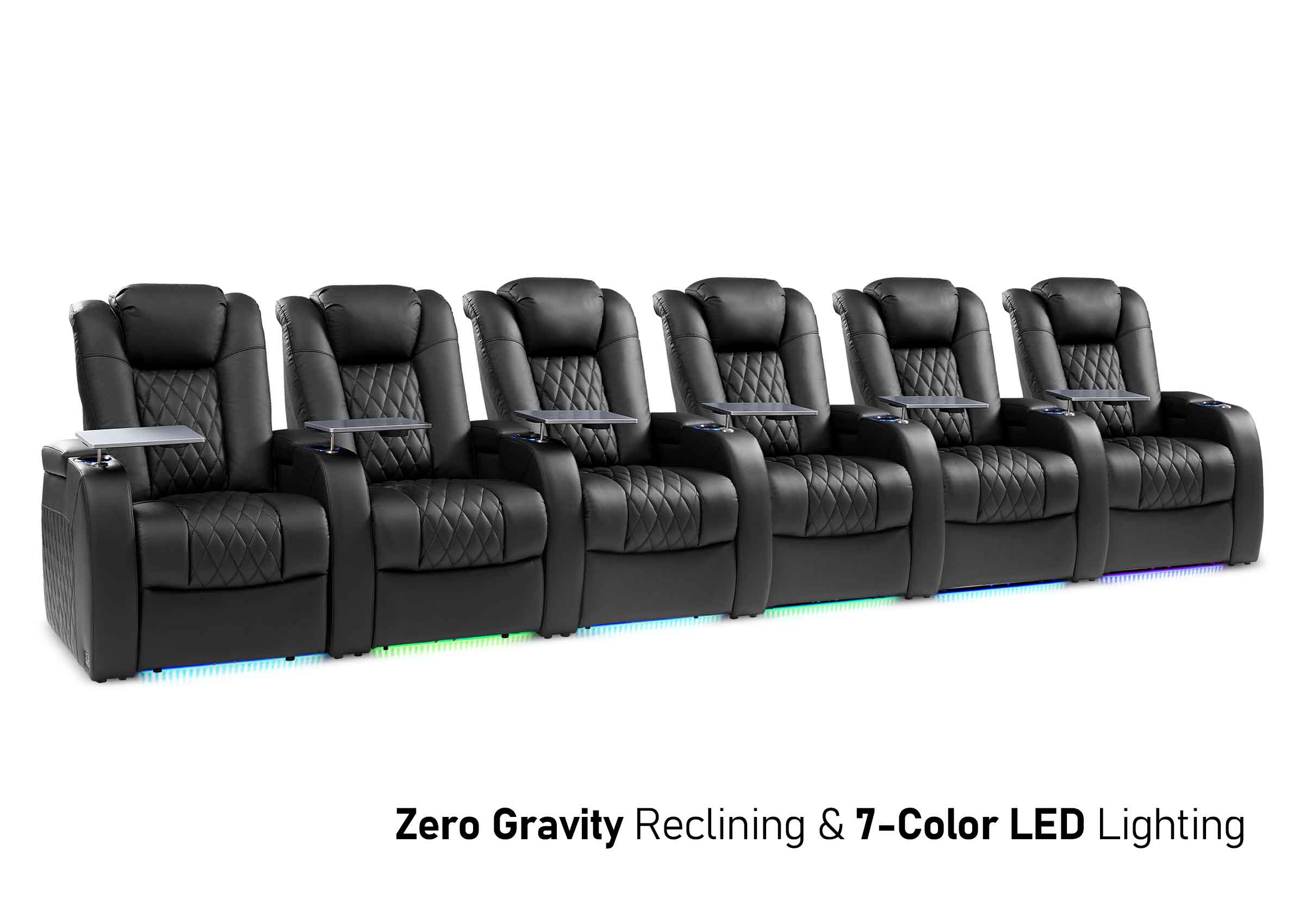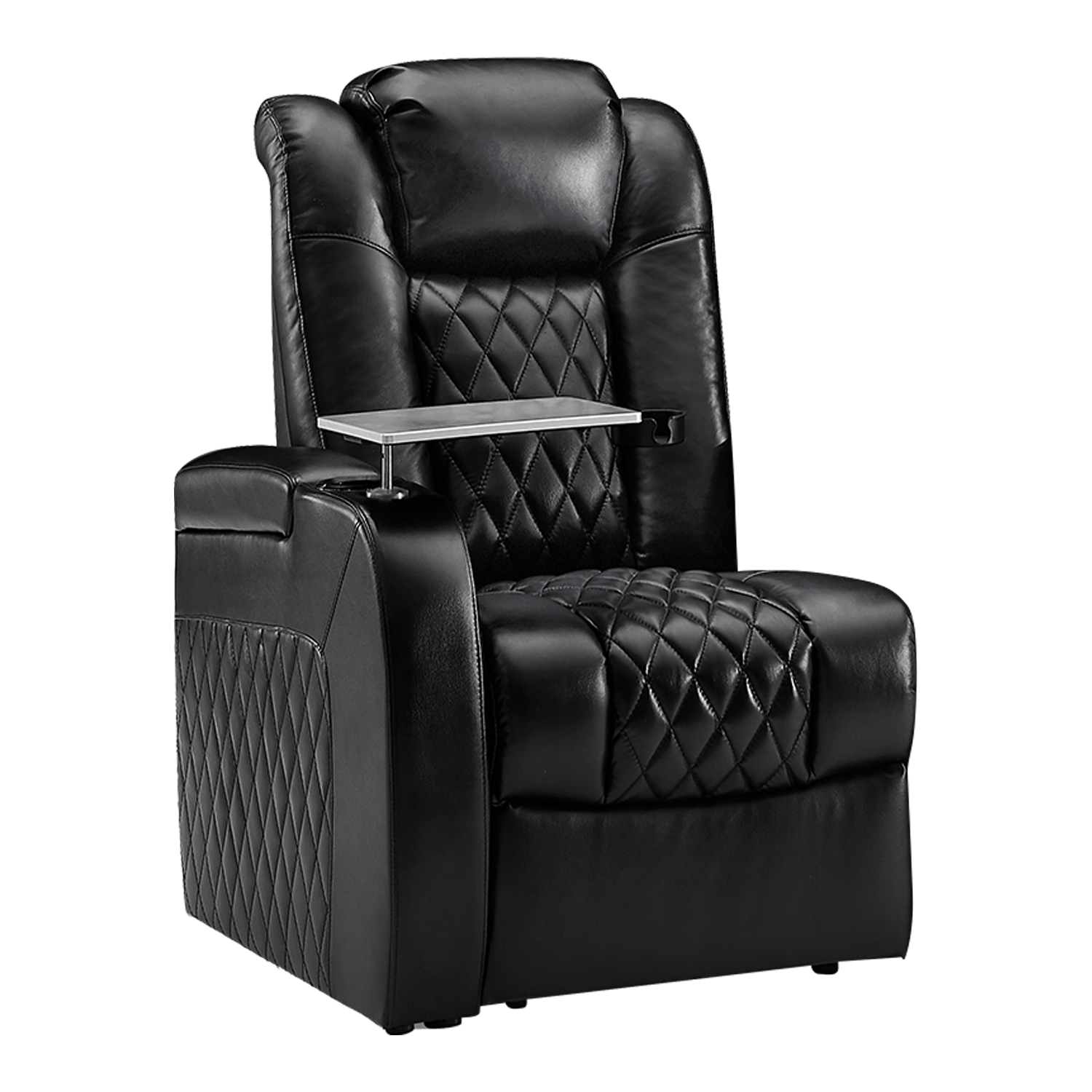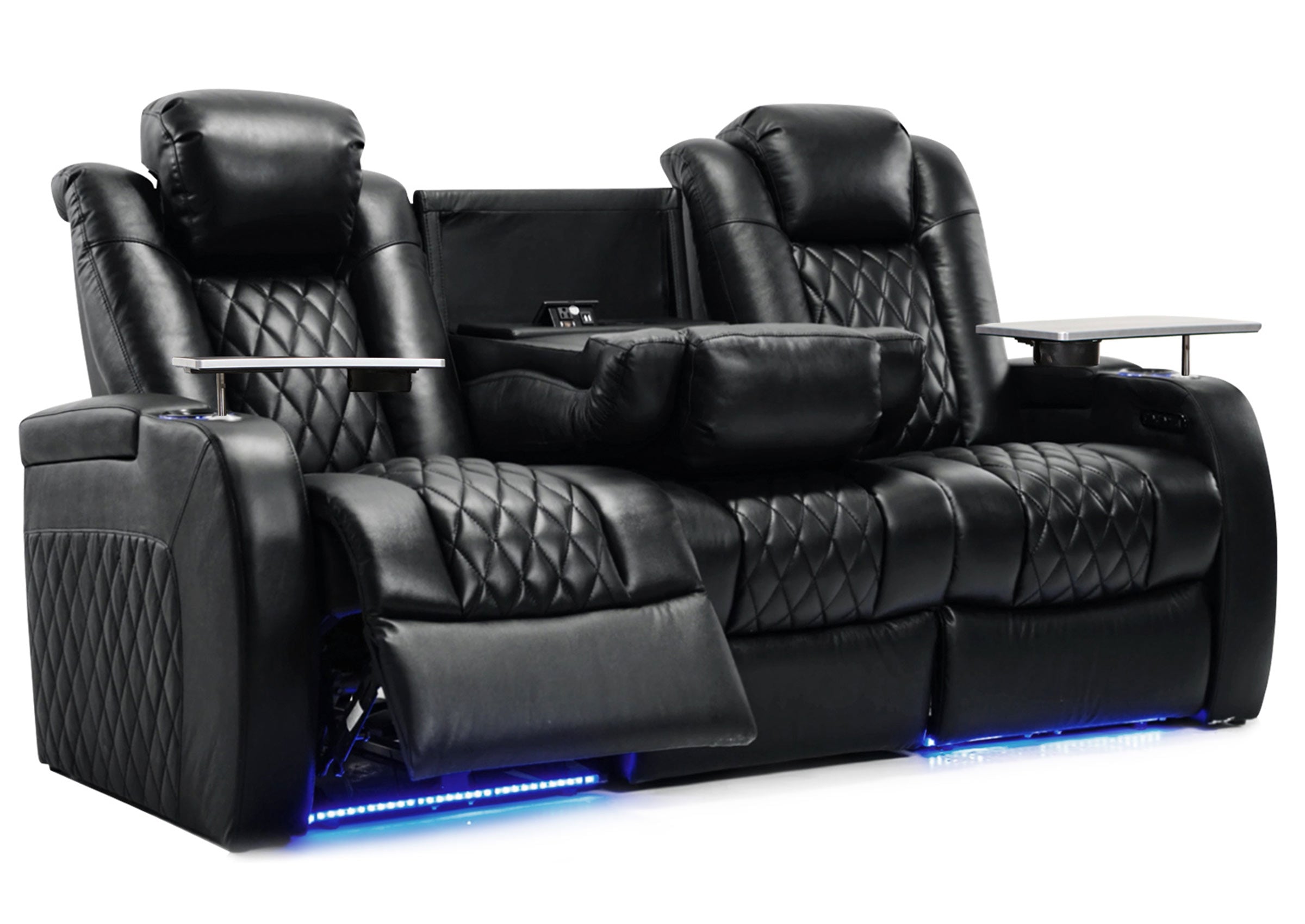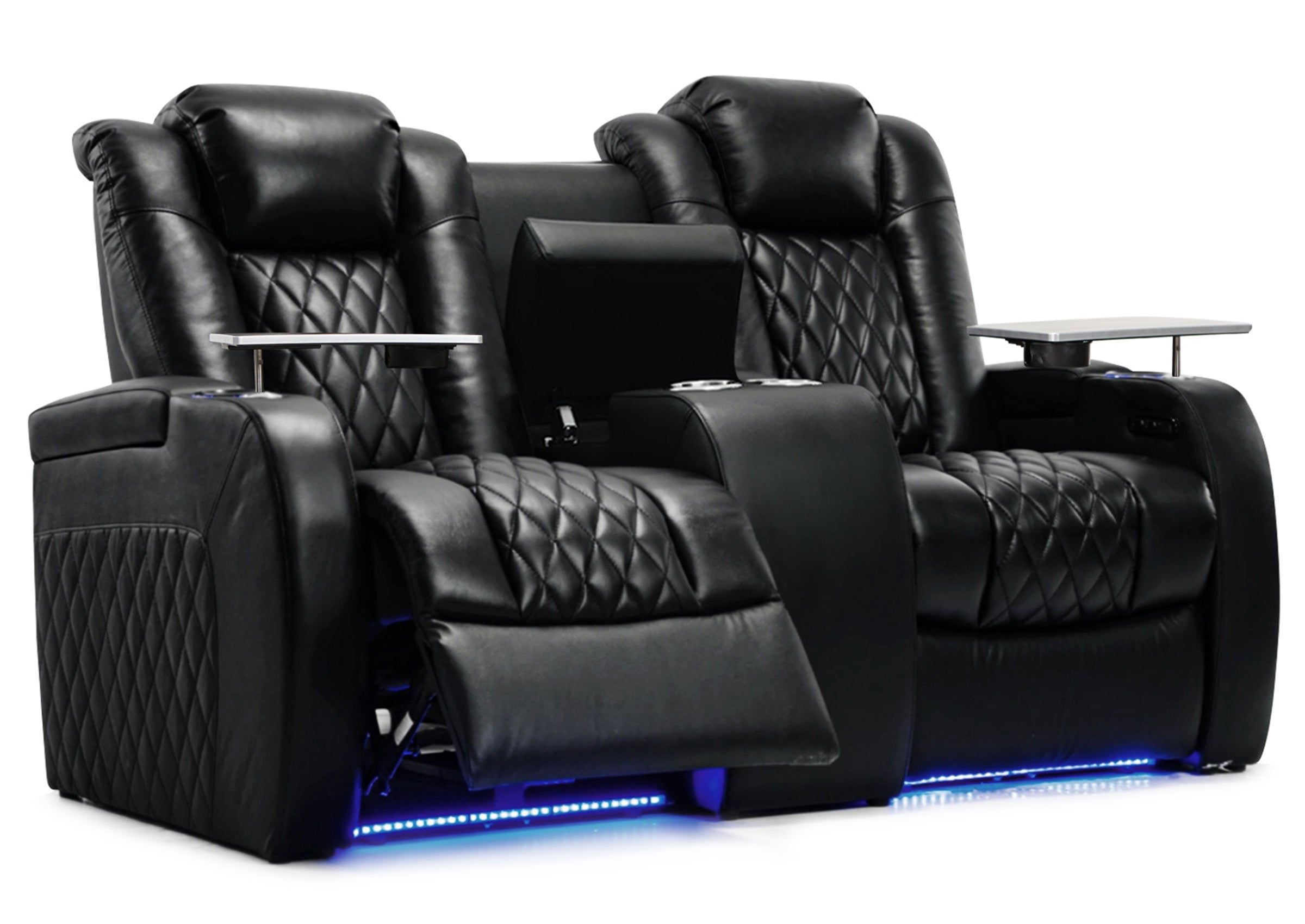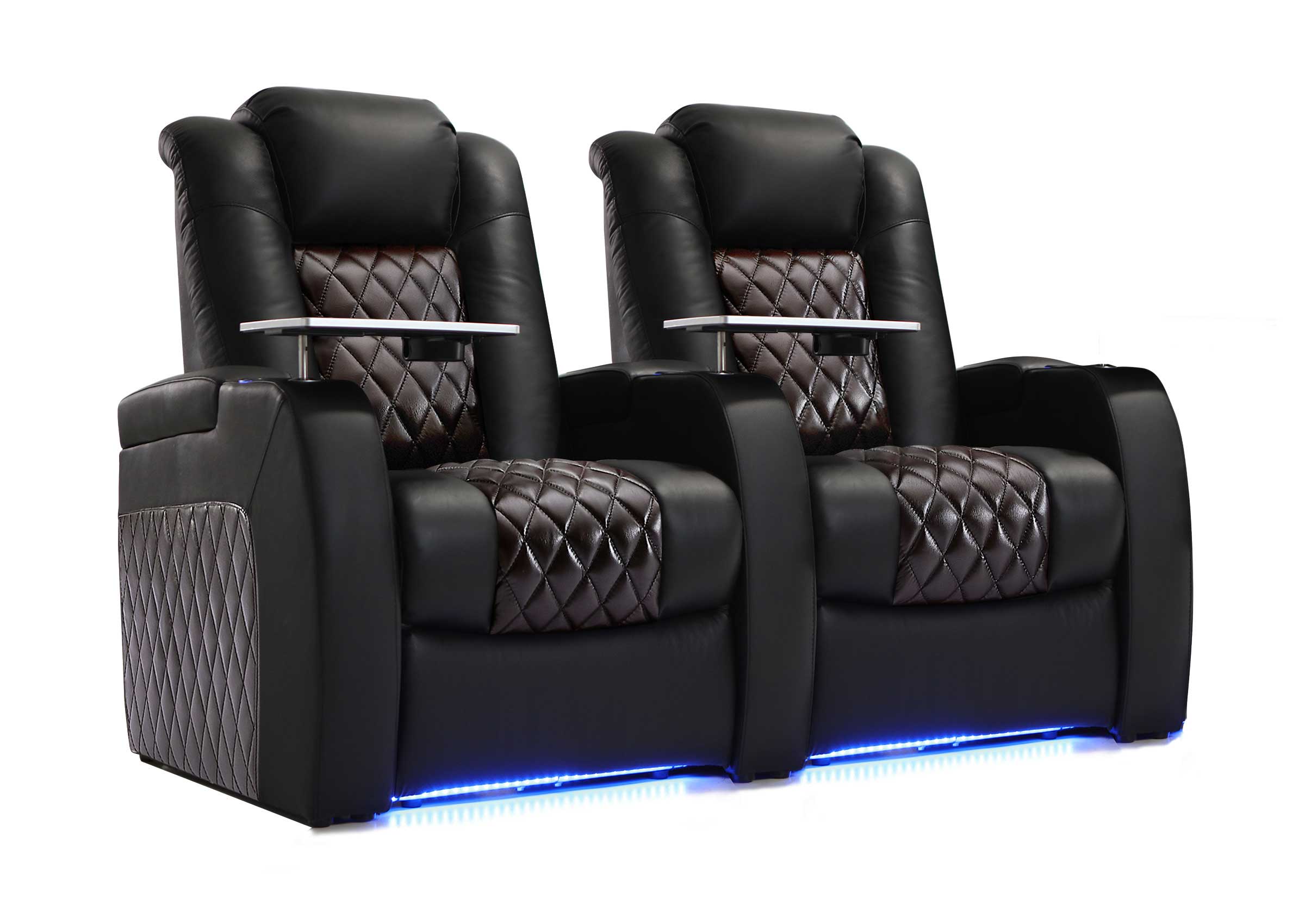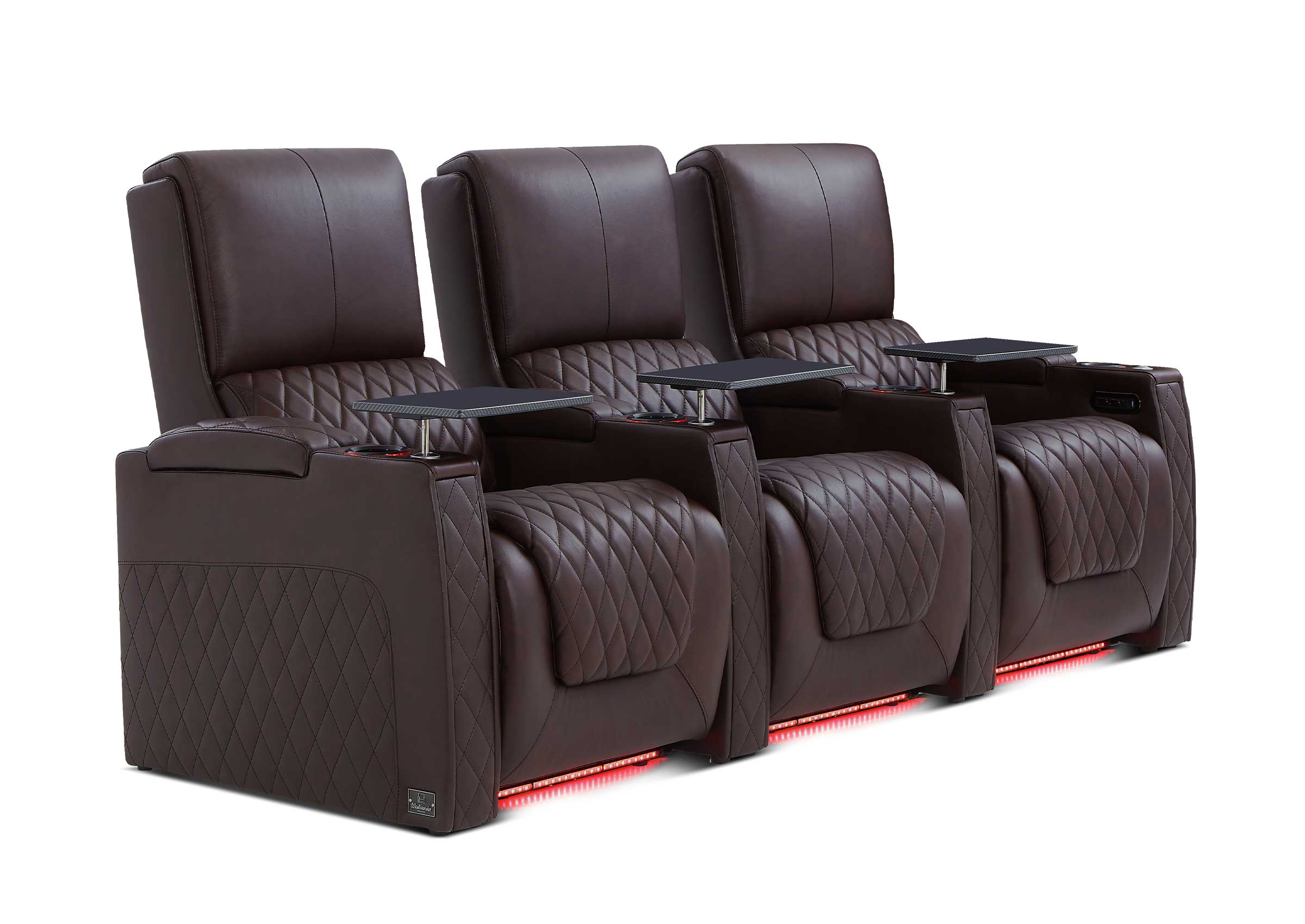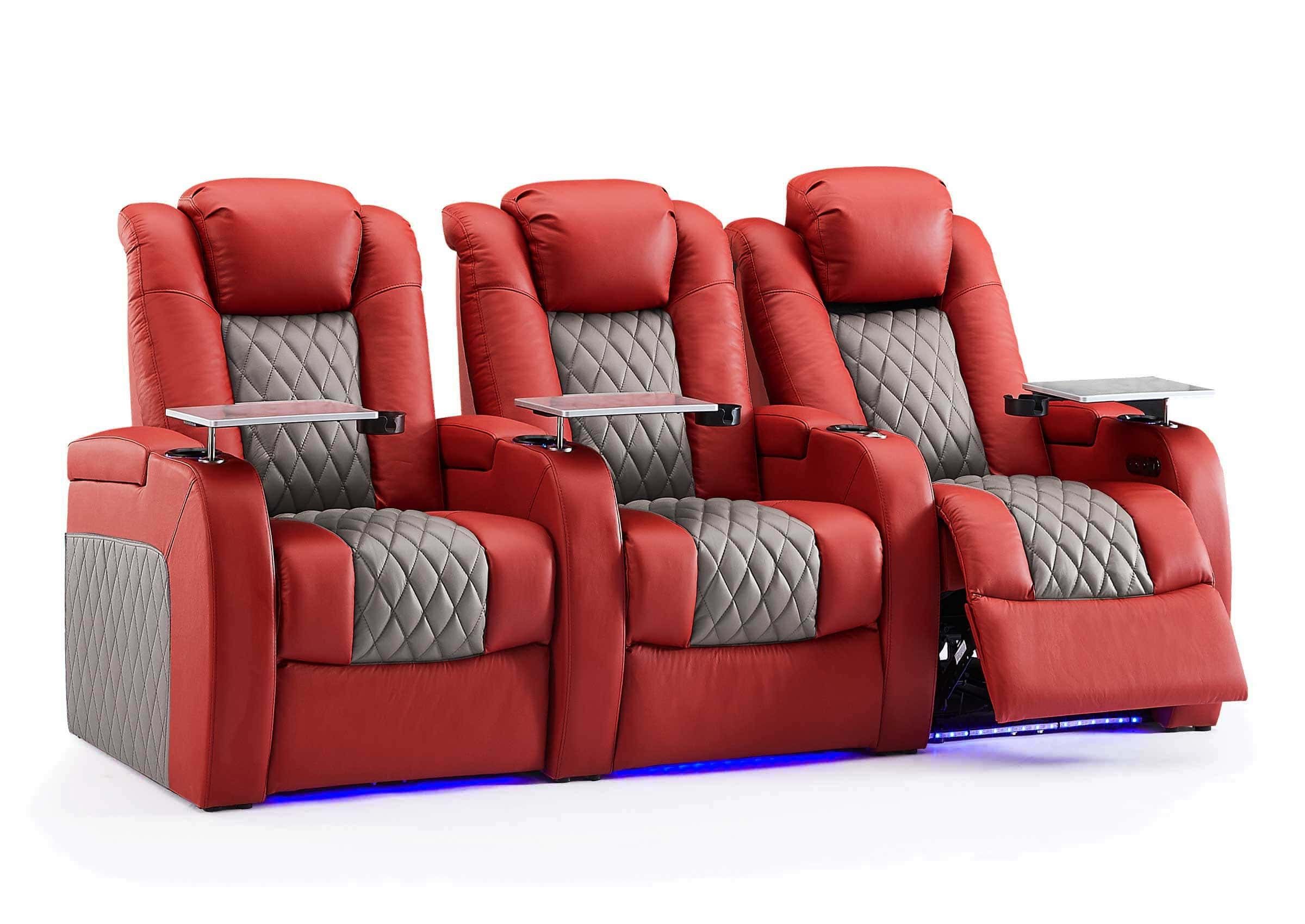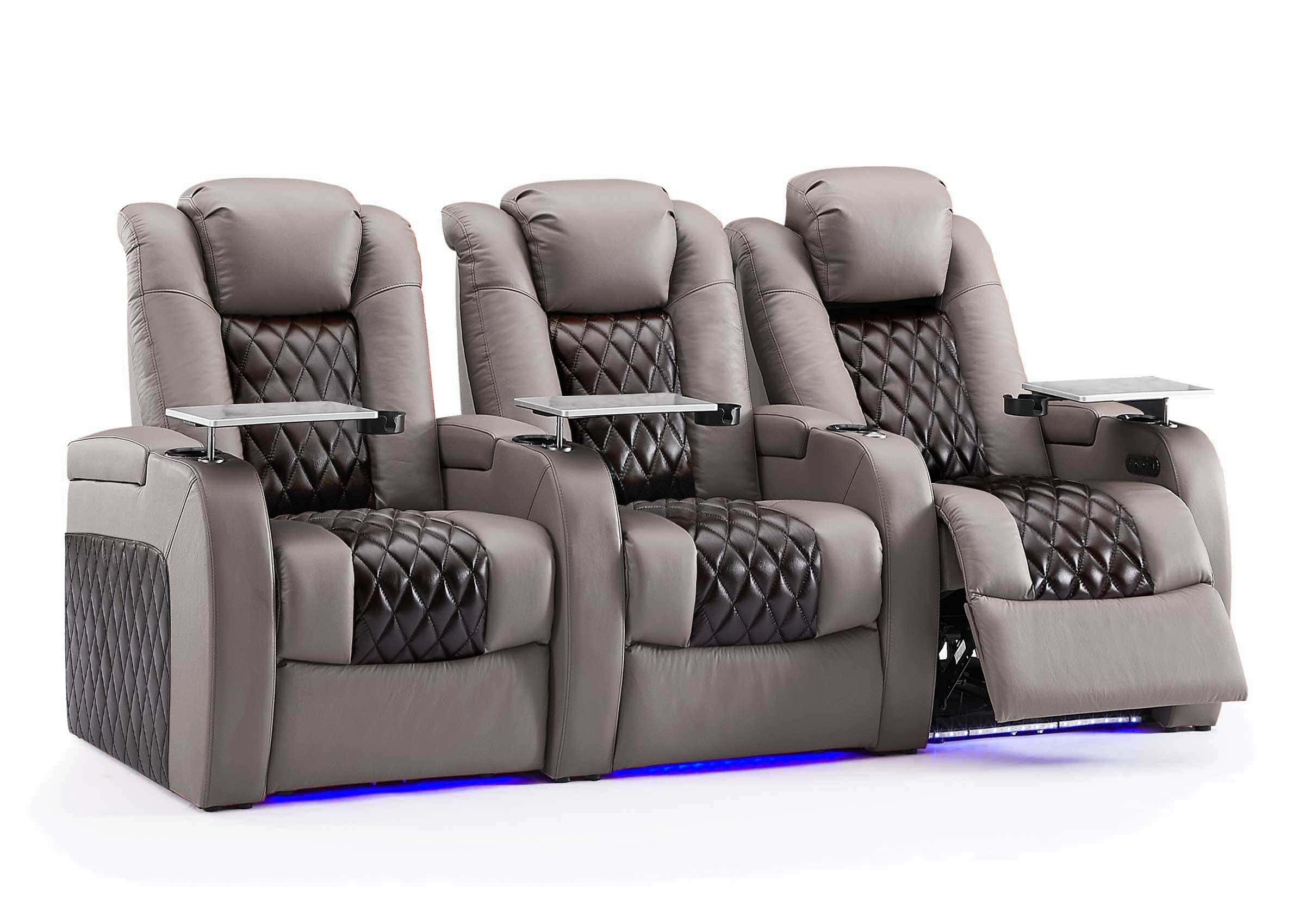Creating the perfect home theater is an exciting endeavor, but it comes with its set of challenges. From choosing the right screen size to configuring the ideal seating arrangement, every detail plays a pivotal role in crafting a cinematic oasis. This guide will explore 6 common pitfalls in setting up home theater seating and offer practical solutions to ensure your viewing space combines comfort with an unparalleled audiovisual experience.
1. Incorrect Screen Size
Selecting the appropriate screen size for your home theater is critical to both the aesthetic integration into the room and the viewing experience it provides. An oversized screen in a small room can make viewers feel overwhelmed, detracting from the enjoyment and causing potential eye strain, as the eyes have to work harder to track action across a vast surface. Conversely, a screen that's too small won't provide the immersive experience that home theaters aim to deliver, making blockbuster movies feel less impactful.
The ideal screen size for a home theater is determined by the viewing distance-the space between the screen and the primary viewing location. The recommended viewing distance is about 1.5 to 2.5 times the diagonal length of the screen. For example, if you have a 60-inch screen, the optimal viewing distance would be between 7.5 feet (90 inches) and 12.5 feet (150 inches). This range ensures that viewers can see the entire screen without needing to move their heads significantly, and without the pixels of the screen being individually distinguishable, thus maintaining a clear and cohesive image. Calculating this distance is not just about comfort but also about maximizing the performance of the screen resolution, especially with the detail provided by modern 4K technology. To simplify this process, you can use a TV viewing distance calculator to quickly determine the exact optimal range for your specific screen size.
Moreover, the choice of screen size should be aligned with the resolution of the display. Higher resolution screens, like 4K displays, can be viewed comfortably from closer distances, allowing for a larger screen in a smaller space without compromising image quality. This closer viewing distance takes advantage of the increased pixel density, which offers a sharper and more detailed image, enhancing the viewing experience even further. Therefore, when selecting a screen size, it's essential to consider both the dimensions of the room and the screen's resolution to ensure a balanced and enjoyable home theater setup.

2. Poor Room Lighting and Reflective Surfaces
Proper lighting control and minimizing reflections are key to optimizing the viewing experience in a home theater. To effectively manage room lighting, it's essential to mitigate both natural and artificial light sources that can cause screen glare. Utilizing dark, matte finishes on walls is an effective strategy to reduce light reflection. These finishes absorb light rather than reflecting it, enhancing the contrast and color accuracy of the projected image.
In addition to wall treatments, the strategic use of blackout curtains can significantly control the amount of natural light entering the room, which is crucial during daytime viewing. These curtains should be heavy enough to block out light completely, ensuring that the screen remains visible without interference from external light sources.
The placement of the screen itself also plays a crucial role in minimizing reflections. Positioning the screen away from direct light sources, such as windows or bright indoor lighting, prevents glare and maintains the integrity of the image displayed. This involves careful consideration of the room's layout when setting up your home theater to avoid areas where light can directly hit the screen. These measures, combined, create an ideal viewing environment that mimics the controlled lighting conditions of commercial cinemas, thus enhancing the overall home theater experience.

3. Choose the Wrong Seating
Ergonomic support is one of the most crucial aspects to consider. High-quality theater seating should offer power recline and adjustable headrests, allowing each user to customize their seating position effortlessly. This customization is vital as it helps prevent the discomfort that can come from extended periods of sitting, especially during long movies or gaming marathons.
Modern home theater seating often incorporates technological conveniences that cater to today's digital lifestyle. USB charging ports are becoming a standard feature in premium seating options, providing an easy and accessible way to keep electronic devices like smartphones, tablets, and gaming controllers charged without having to leave your seat. This feature is particularly useful in maintaining an uninterrupted home theater experience, ensuring that devices are always ready for use, whether for controlling playback, gaming, or staying connected online.
Practical amenities such as swivel tray tables and luminous cup holders combine functionality with luxury. Swivel tray tables offer a reliable surface for snacks, remote controls, and other accessories, enhancing the usability of the space without cluttering it. Meanwhile, luminous cup holders add a subtle aesthetic touch while being highly practical in a dimly lit room, reducing the risk of spills. These features, along with the use of high-quality materials like top-grain leather, ensure durability and sustained comfort, making the home theater experience enjoyable and stress-free over many years. The selection of top-grain leather not only contributes to the longevity and aesthetics of the seats but also ensures that they remain comfortable and supportive even with heavy use.
4. Suboptimal Seating Arrangement
Designing the seating arrangement in a home theater is pivotal to ensuring every viewer has an optimal experience. The seats should be organized so that the center of the screen is at eye level for viewers in a seated position, as this helps prevent neck strain and enhances the visual impact of the screen. This ergonomic setup mirrors the natural line of sight, making the viewing experience more comfortable and immersive.
For home theaters with multiple rows of seating, tiered seating is highly recommended. Tiered seating ensures that each row is elevated slightly above the one in front of it, similar to the layout of traditional cinemas. This arrangement guarantees that all viewers have an unobstructed view of the screen, regardless of their seat. Implementing this can involve building custom platforms or purchasing pre-made home theater risers, which are designed specifically for this purpose.
Properly planned seating not only maximizes each seat's view but also enhances the audio distribution throughout the room, as sound dynamics change with distance and elevation relative to the screen and speakers. Therefore, careful consideration of seating layout is essential for both visual and auditory enjoyment in your home theater.

5. Acoustic Challenges
The acoustics of your home theater can dramatically impact the quality of sound. One common mistake is placing speakers inside enclosed spaces such as cabinets. This configuration can restrict the movement of sound waves, resulting in muffled audio that lacks clarity. To combat this issue, it's recommended to position speakers in open spaces where they can properly project sound throughout the room. Additionally, enhancing a room's acoustics involves incorporating elements like acoustic panels, bass traps, and diffusers. These tools are designed to absorb and scatter sound waves efficiently, reducing unwanted echoes and reverberations. This setup helps achieve a clearer and more balanced sound, crucial for the immersive experience home theaters strive to provide .
6. Inadequate Equipment Calibration and Setup
Proper setup and calibration of your home theater equipment are essential for optimal audio and visual performance. Many modern AV receivers are equipped with auto-calibration features, which use microphones to automatically adjust settings based on the acoustic properties of the room. However, these automated processes may not always account for all variables. Manual adjustments can further refine these settings, ensuring that speakers are balanced and the video display is accurately calibrated for the best possible picture and sound. This involves adjusting speaker levels, testing different placements, and fine-tuning the display settings to match the ambient lighting and viewing angles of the room .
The Bottom Line
By understanding and addressing common issues such as screen size, room lighting, seating comfort, and acoustic quality, you can significantly enhance the enjoyment and functionality of your home theater.








